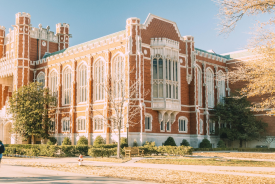Beijing Air Pollution Levels 26 Times the 'Safe' Limit Set by World Health Organization
ByAir pollution in Beijing has elevated to an even larger problem than it already was, as officials say the level of toxic small particles is more than 20 times a concentration considered safe.
According to the Associated Press the air had a strong and unpleasant smell and the smog was so thick, people on the ground were unable to see the tops of the city's skyscrapers. Commuters and passersby in Beijing walk around with industrial strength face masks and one traffic coordinator who only identified himself as Zhang said the air pollution has been building for years.
"I couldn't see the tall buildings across the street this morning," Zhang told the AP from a busy intersection. "The smog has gotten worse in the last two to three years. I often cough, and my nose is always irritated. But what can you do? I drink more water to help my body discharge the toxins."
Winter is an especially bad time for the air in Beijing. Unchanging weather patterns exaggerate an increase in coal burning to worsen air pollution and influence days of heavy smog to cover the city.
The AP reported levels of PM2.5 pollution were measured Thursday at 500 micrograms per cubic meter. The level considered safe by the World Health Organization is 25 micrograms per cubic meter and Beijing's is about 26 times higher.
"The updated plan is more detailed, makes improvements in timeliness and is more practical," Qian Hua, former director of the atmospheric environment research institute under the Shanghai Academy of Environmental Sciences, told Chinese publication ECNS.cn.
"The environmental workers are not gods. They need to learn knowledge about weather and come up with a practical emergency plan," he said. "But Shanghai leads other areas in the country with such a plan and it has been quick to make adjustments when it found defects in the original one."
Part of the plan is a color-coded alert system. Red signifies the most serious air pollution threat, orange second, yellow third and blue being the fourth and lowest alert level.
© 2025 University Herald, All rights reserved. Do not reproduce without permission.








